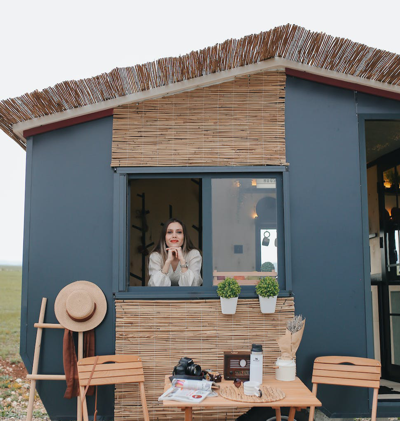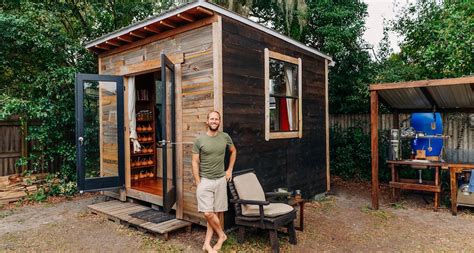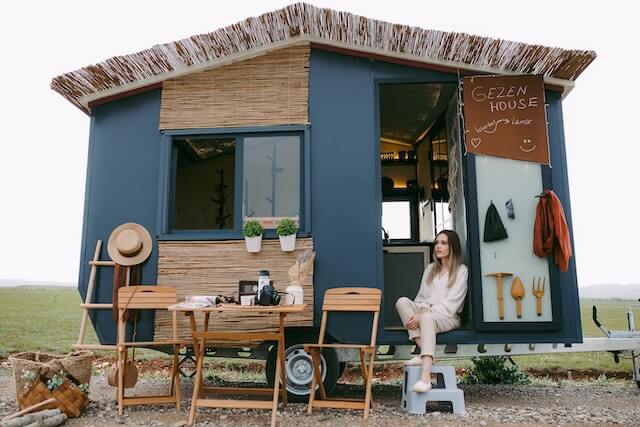Times have definitely changed. Back then, the perfect house for many people meant a big one. But as the years go by, more people are downsizing – some even to the point of living in a tiny house.
Tiny houses are on the rise these days for a good reason. They offer people a way to live a more sustainable and economical lifestyle. If you’re thinking of going tiny, there are a few things you should ask yourself first. This article will discuss the top ten questions you need to ask yourself before deciding on getting a tiny house.
By the end of this article, you will be guided in your decision to get a tiny house for yourself and your loved ones.
What is the definition of a Tiny House?
A tiny house is a small, simple, and often portable dwelling. In the industry a THOW (Tiny House on Wheels) can be up to 400 square feet and as small as 100 square feet. If a tiny house is under 100 square feet they are often referred to as a micro homes or sheds. Tiny houses on Wheels are classified as RV’s and are usually RVIA or NOAH certified and the maximum size according to the National Fire Association (NFPA) 1192 Standard for Travel Trailers is 400 square feet. So when it comes to a tiny house on wheels they are always under 400 square feet.
When it comes to Tiny Houses on a Foundations, then they can be up to 500 square feet. Although most sites tell you the maximum size is 400, they are grouping THOW’s and Tiny Houses on Foundations under the same definition; which is wrong. Tiny Houses on Foundations are not RV’s so there size can be larger. We are basing the 500 square feet size upon the fact that JADU’s or Junior Accessory Dwelling Units in California have a maximum size of 500 square feet. Also when talking about Tiny Houses on foundations for living in, ie a home, they should be a minimum of 200 square feet; as this is the minimum dwelling size set by the International Building Code (IBC).
The tiny house movement began in the early 2000s as part of an anti-consumerist trend among young people disillusioned by the size of their homes and the amount of money they were spending on them. It gained momentum following the global recession of 2009, when many people lost their jobs or struggled to pay their mortgages and decided to downsize their living space.
If you are thinking of going Tiny; Then here are the Top Ten Questions to Ask Yourself
Now that you have some basic information about tiny houses, here are some questions you need to answer if you want to live in a tiny house.
Are you okay living in smaller spaces?
Tiny houses typically range from 100-400 square feet (though some can be as small as 20 square feet). This might feel like a drastic change if you’re used to living in a large house or apartment. If you decide to go through with it, remember that the transition will not be immediate. Your mind may need time to adjust to the new space, so don’t expect an overnight transformation.
How often do you stay at home?
If you are someone who works from home or if you stay at home all day every day, then this option may be perfect for you. However, if you often travel or enjoy spending time away from home during the weekdays or weekends, this might not work out very well since there aren’t many opportunities for travel or entertainment close by or within walking distance of your new home.
Some people choose tiny houses because they want to save up on the hotel and car rental fees whenever they travel from state to state because of work, vacation, or other reasons. If this is you, be prepared to live a more settled lifestyle when you’re not on the road.
Are you okay with downsizing your lifestyle?
Tiny houses are usually very streamlined — think of them as extreme minimalism on wheels. You won’t have much space for hobbies like woodworking or gardening that involve spending a lot of time in one place. If you enjoy making music or art, then a tiny house might not be for you unless you have a particular idea about what kind of tiny house would fit those needs.
Hoarders and tiny houses don’t go well together because it’s self-explanatory. So if you struggle with letting go of things, moving to a tiny house may not be the best option.
Are you open to moving from one place to another?
Tiny houses are often easier to move than full-sized homes, but moving requires a lot of effort. If you are willing to give up your home in the future, this shouldn’t be an issue. However, if you have no intention of ever moving again, then perhaps a tiny house is not for you.
Let’s say, for example, that your work requires you to travel for weeks or months. In this case, it might be challenging to keep up with the maintenance of a tiny house by yourself. You need someone to check on your home regularly or hire a professional cleaning service to maintain it while you’re away.
How comfortable are you with spending time outdoors?
A tiny house, in general, might not be for you if you’re not a fan of the great outdoors. You’ll have to spend time outside, working in your garden or relaxing on your porch. If this is something that makes you uncomfortable, it may not be worth it to live in a tiny house.
Can you live without some luxuries in your house?
Tiny homes are usually limited to one or two bedrooms, which means that if you have more than one child or other family members who spend time at home, it may not be suitable for you. Also, consider whether you’ll be able to do without certain items — such as a washer and dryer — to make room for other things that matter more to you (like a TV).
Some tiny houses offset the lack of luxury by being situated in beautiful locations. If you’re someone who enjoys the serenity of nature, then this might be the perfect solution for you. Who needs a wide-screen television when you can wake up with the gorgeous view of the Rockies in front of you each morning?
Do you know how to maximize space?
If you don’t know how to make the most of every inch of your home, then it’s time to learn. Before you go through the trouble of moving into a tiny house, get organized and start making lists of what you need. Make sure that all your possessions are worth keeping and that there aren’t any extraneous items cluttering the place.
Storage organization plays a huge role in living in tiny houses. You’ll need to find creative ways to store your belongings without too much space. For instance, you could use under-the-bed storage containers or invest in a Murphy bed that folds up the wall.
There are a lot of storage organization products that you can buy on Amazon, Walmart, or other retailers. But sometimes, it’s best to just make your own storage solutions.
How often do you have guests coming over?
Tiny houses are small, so they don’t have much extra space. If you like having large dinner parties in your home, then perhaps a tiny house isn’t right. But if you only need one or two extra seats around the table, then they’re perfect.
However, that doesn’t mean you can’t invite guests over when you live in a tiny house. You can maximize by using outdoor seating and tables as your receiving area for guests. And during the summer, you can even have barbecues and pool parties in your backyard (if you have one).
Of course, if you live in a tiny house community, you’ll have more opportunities to socialize with your neighbors. Many people living in tiny houses say they feel a stronger sense of community than they did when living in a traditional home.
Do you love DIY projects and solutions?
DIY lovers and tiny houses go hand in hand most of the time. Why? It’s because many people who live in tiny houses have to be resourceful and creative regarding storage and organization. If you love finding new ways to solve problems, you’ll probably enjoy living in a tiny house.
There are a lot of great DIY storage solutions that you can use in your tiny house. For instance, you could install a Pegboard in your kitchen to hang pots and pans. Or you could use mason jars to store your spices and other small items.
The best part about DIY solutions is that they’re usually very affordable. So if you’re on a tight budget, this is the way to go. Also, if you want to live in a tiny house, you’ll need to remodel it. And if you don’t enjoy DIY projects, then this might not be your lifestyle.
Any plans for the future?
Tiny houses are not meant to be permanent, but they can be. If you’re looking at building a tiny house, chances are that you want something that can be moved around easily and will take up less space in your life. If you’re planning on living in the same place for decades, then a tiny home might not suit you.
Conclusion
These questions are just a starting point for those considering a move to a tiny house. But if you’re still on the fence about whether this lifestyle suits you, then it’s time to start doing your research.
The best way to learn about living in a tiny house is to talk to people already doing it. There are many Facebook groups and online forums where you can ask questions and get advice from those who have lived in tiny houses for years.
You can also read books or watch documentaries about the tiny house movement. This will help you understand why people choose to live in tiny homes. Once you understand the lifestyle better, you can decide if it’s right for yor acss thi I





Responses